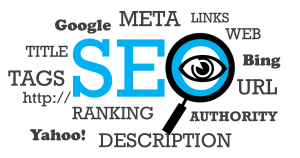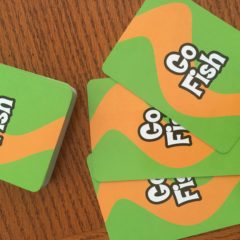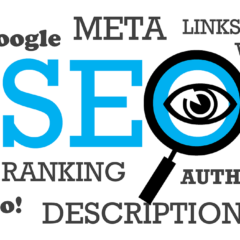social media
3 Strategic Dental Marketing Skills That Enable You to Know Your Audience
 It’s more than a game. At least, that’s how I feel when playing “Go-Fish” with our six year old grandson.
It’s more than a game. At least, that’s how I feel when playing “Go-Fish” with our six year old grandson.
Your dental marketing is more about strategy. How you apply a certain type of strategic skill these days can improve your outcomes.
“Go-Fish” is a simple children’s card game. It’s mostly about matching cute, aquatic characters or associated numbers from the card faces you’re dealt.
There’s nothing really complicated about it. The strategy involves your powers of observation.
Listen and learn mindset
It’s common to make assumptions when you market your dental services. For example, observe much of today’s dental practice marketing promotions and what do you hear?
Smile this, smile that, right? Sure, smiles reveal healthy teeth – that’s the core of dentistry.
Is there more? Yes, there are many deeper benefits provided by dentistry.
Strategically speaking it’s to your advantage to dive-deeper into the longings, desires, needs, hungers, you name it of your patients or clients. This is the essence of strategic observation.
3 Strategic Skills That Tap Into the Deeper Needs of Your Dental Marketing Audience
1-Listen to conversations via social media.
Communication has changed. And depending on your experience or perspective, you would have to agree that in many ways it’s improved.
Mostly the speed and access to communication has shifted dramatically. Data driven conversations (text, social media, direct messages, etc.) are somewhat more common than audible (voice) driven conversations.
This reality impacts how people are accustomed to receiving information. And you must adapt your marketing to connect.
I was recently asked via Twitter (more on that in a moment) about “the listening tools” I use. My reply was somewhat reflexive – “social media,” specifically Twitter.
People use social media to talk, chat, share, boast, sell, market, disagree, promote, preach, pundit, push, encourage, shout-out, support…you get the picture.
Between the lines of all the data driven dialog are needs, desires, frustrations, pains, likes, goals, etc. And the more industry or niche oriented your channels are the more you’ll discover that’s useful for creating compelling content.
- Establish social media connections via Twitter, Facebook, or wherever your “audience” hangs-out. Twitter and Facebook are tops. Sign up (if you’re not already).
- Get acquainted with the channel. For example, Twitter is great for following trends, sharing content, and engaging in quick conversation around content and shared interests.
- Be consistent as you can be. Monitor your social channels regularly. Respond to other’s engagement as quickly as you can. This reveals that you’re listening.
2-Leverage trends by tuning into podcasts, Periscope broadcasts, blogs, webinars, online courses, etc.
Today’s educational output flows from informed authorities across every business niche. You can subscribe to a particular podcast or follow someone’s Periscope and gain loads of insight into what’s current.
- Scan what your industry leaders are talking about, listening to, and sharing. Sign up and follow their informational streams.
- Schedule time daily or at least weekly to catch up on the valuable information you’ve subscribed to or are aware of.
- Curate the content and leverage it into useful resources for your growing “audience.” There are transferable principles across every knowledge base. Explore, find, and share them.
3-Lean into “influencers.”
What’s more important than following your industry leaders? Following their leaders!
Leaning into the crowd exposes you to the person, people, idea, or information at the center of the conversation. Lean in to gain all you can.
Again, physical presence isn’t always necessary, especially in this age of access. I have tons of virtual mentors/influencers that stoke my thinking consistently.
- Use social media to get acquainted with influential industry leaders. Follow, share, and curate what they’re talking about.
- Take a risk and reach out. An authentic, brief comment on a podcast rating or a direct message on Twitter or Facebook could open a door to a new relationship.
- Be grateful for what you gain. Say thanks by sharing their content or referring their services/expertise.
Being more strategic can match you with beneficial outcomes. Otherwise, all I can say is “go-fish!”
Why You Should Change Your Thinking About Dental SEO and What You Should Do Now via Your Dental Website
 Right off the top, I give credit where it’s due. Before I give my shout-out, I want you to take a deep breath and repeat after me, “Dental SEO is not dead, it’s just evolved.”
Right off the top, I give credit where it’s due. Before I give my shout-out, I want you to take a deep breath and repeat after me, “Dental SEO is not dead, it’s just evolved.”
I give due credit to Ryan Stewart for the stream of thought in this post. His related article on Moz.com was spot on.
SEO isn’t dead…just different.
Perhaps you’re a bit worried. The thought of SEO being mentioned alongside the word, “dead” can cause a collective gasp.
Why?
Like most, you might have banked your dental website rankings on dental keywords stuffed throughout every page on your dental website. From the home page to your contact page perhaps you dropped some cash with an SEO-centric web design firm who all but guaranteed you a top local ranking.
Maybe it’s worked…and maybe it hasn’t.
But that’s not the biggest issue here.
The big deal is – SEO has evolved. How the search engines find and rank you and your content has changed and is changing.
Stewart says, “Google shows search results based on what’s best for the user. We can’t just rank for whatever keywords we want.”
He shares examples of searching terms from “best headphones” to “restaraunts” (in a specific city) to “buy a cheap tv” to “plumbers” (again in a specific city). The results in each example returned no websites on the first page search listings.
What did the search results reveal on the first page? According to Stewart’s examples, it depends.
His “best headphones” search revealed not a single product page. All first page results were articles about headphone types, benefits, pricing, etc.
What about “restaurants” (city specific)? No first page results included a single restaurant website, only review aggregators and Zagat ratings. Below the fold (second pages and beyond) the results featured listicles, reviews, and…again…articles.
“Buy a cheap tv” returned product pages in the top five results. Before you say, “Ah-ha…told you…,” they’re all mega-brands. Stewart confirms something you must understand: you’ll never outrank a brand for those type of keywords (unless you spam it up). And again, guess what, articles not product pages ranked at the bottom of the first page.
Are you seeing a trend here?
What about Stewart’s search example of “plumbers” (city specific)? Again top rankings were review aggregators like Yelp and Google+.
Why you should change your thinking about dental SEO and what you must do now to establish your authority online.
Stewart says two things are happening. 1-Google’s full of data and they’re using it based on what users (e.g. you, me, your patients, clients, etc.) want.
2-Google is moving into the “pay to play” era (like Facebook). They’re capitalizing on the massive revenue that comes from advertising.
(Read Stewart’s complete article here for detailed insight and analysis of this entire trend.)
My main take-away from Stewart’s article is this: content rules!
What does that mean for you and your dental SEO?
1-Listen (more than ever) to your “audience.”
What are they talking about? Concerned about? What services do you provide that solves the problems they face?
- Write to that! And write to it a lot.
- Inform your readers based on what you hear them saying to you via your reviews, surveys, chair side conversations, phone consults, in-office consults, treatment plan questions. You get the idea.
2-Create useful content consistently.
Stop playing the tell-them-everything-on-your-main-webpages game. What do I mean?
The days of burying all your informative “eggs” in your website services “basket” (pages) is done. Why?
People aren’t willing to wade through it. And if they did, it’s often full of too much dental-speak that they numb out and click away from the page.
- Start or re-start your blog/article page. This is your new SEO-friendly platform for valuable keyword relevant content.
- Experiment with podcasts, other forms of social media (Pinterest, Instagram, Periscope), and video (YouTube) content channels. Not all are readers. This will appeal to the audio/visual types.
- Link all content back to your website platform. This increases your search savvy-ness.
I recommend checking out Ryan Stewart’s more thorough and highly practical content on this subject. I agree with the essence of it, SEO isn’t dead but it HAS changed.
How to Be Attentive to Your Dental Website Visitors So They Connect with You Long-term
 Our oldest daughter gave birth this week. So, my wife and I welcomed a granddaughter to our trio of grand children.
Our oldest daughter gave birth this week. So, my wife and I welcomed a granddaughter to our trio of grand children.
There’s a fascinating innocence and dependence innate to a newborn. Be aware of the same fascinations in your dental marketing content.
A newborn is all about parental attention. Without life sustaining attention survival is at risk.
Attention-deficit
I’ve written in numerous posts that the days of merely building and launching a dental website and expecting a noticeable return on investment is no longer acceptable. The set-it-and-forget-it or if-we-build-it-they-will-come mindset dooms you to frustration.
Imagine celebrating the long-awaited birth of a child. Tears flow, high-fives and handshakes are exchanged, happy parents, siblings, grandparents, aunts and uncles hold and cuddle the newborn.
Now imagine nestling the baby comfortably in his/her crib then placing a bag of diapers, wipes, and a full bottle next to them and saying, “Hey, sweetie welcome to world…let us know when you need something…”
Babies aren’t self-sufficient. And neither is your online dental marketing.
Self-serve or self-sufficient?
Self-sufficiency implies the ability to care for yourself without the assistance of another. Self-service is about having necessary, appealing resources available for the choosing when you’re ready or in need.
Think of your dental website as a self-service platform. But that doesn’t imply that you must hover over it.
Some are old enough to remember or fortunate enough to live in locales where full-service gas/fueling stations exist. You drove in, lowered your window, and an attendant asked how much fuel you wanted. While it was pumped into your tank the attendant washed your windows, checked your oil and fluid levels, and handled payment without you ever having to leave your vehicle.
Good ole’ days, right? Perhaps.
Your site visitors are more accustomed to anonymity. They prefer more of a self-service approach.
And they want access to useful information when they visit your website on their time, at their convenience.
How to Be Attentive to Your Dental Website Visitors So They Aren’t Required to Fend for Themselves and Seek Solutions Elsewhere
Respond to their “cries” for help.
I have no intention of being dramatic. Nor do I want to imply that your website visitors are needy, whiny individuals.
I’m following my newborn metaphor here, so bear with me as a new grandparent.
Newborns cry a lot!
It’s not always a cry for help. Sometimes it’s about hunger, a diaper change, or the need for security.
Life outside the womb is different than the predictable, warm, cozy environment of Mom’s tummy. There’s noise, bright lights, glaring eyes, hands on and off, ups and downs.
Your website visitors arrive on your site with a need. They’re looking for answers, your services, a solution to their problem or relief for their pain, etc.
- Be responsive. Anticipate their needs, wants, and desires. Create content via articles, blog posts, etc that reveal your understanding of their circumstances.
- Listen in advance. Your best help comes from a position of understanding. Dial into social media posts, tune into trends being talked about, read between the lines of your reviews and survey responses.
- Empathize through education. Provide informative content that supports your efforts to understand the needs of your web visitors.
Change when necessary.
People are accustomed to options. Change the channel occasionally.
- Provide multiple ways to connect with your services and related expertise.
- Switch-up your content delivery to include written (article/blog, email), audio (podcasts), visual (Periscope, YouTube, Pinterest), and social (Facebook, Twitter, Instagram).
Keep your audience well-fed.
Be consistent. Keep your content channel(s) topped-off.
- Audit your services. List the topics and sub-topics within each.
- Create content around your service audit. Use articles, blog posts, etc to dive deeper into the benefits of a particular service.
- Curate and share content relevant to your “audience.” Post links to informative content via your chosen social media channels (Facebook, Twitter, etc.).
Happy website visitors (like happy babies) thrive in a supportive, attentive environment. Make your website a warm, inviting place for your clients and patients.
Implement the Power-of-One and Eliminate Dental Marketing Overload
 I gave myself permission. It helped me narrow my options and relax more than I would have otherwise.
I gave myself permission. It helped me narrow my options and relax more than I would have otherwise.
Trying to accomplish too much all at once leads to frustration and unproductive outcomes. This holds true in your dental marketing copy and content too.
Back to my “permission” moment…
Extended holiday weekends beg for a laundry-list of tasks to be accomplished. That’s the proverbial “road-most-traveled.”
I chose “the-road-less-traveled” this time around. And as author, Scott Peck, once discovered, “it made all the difference…”
I featured this idea of narrowing your focus in a recent post. Specifically, it was about knowing your audience well enough to market to “one” person instead of the collective masses.
The power-of-one
A copywriting mentor, Mark Ford (aka, Michael Masterson) says,
“Stir…one core emotion
Emphasize…one good idea
Tell…one captivating story
Direct your prospect to…one inevitable response.”
It’s easy these days to have too many dental marketing channels sending out too many signals (offers and promotions). It’s a symptom, perhaps, of scarcity-thinking.
That’s being afraid that if you don’t throw enough deals, promotions, offers, sales, discounts, coupons, percentage-savings, etc at your patient or client list, you’ll “starve” from lack of bookings.
What’s enough? Sure, I get that throwing more “seed” increases the odds that you’ll “reap-a-harvest.”
But these days, there’s a risk of people becoming numbed to your offers. They’re “shopping” the lowest bidder in terms of percentage discounts and special offers.
Minimalism and marketing
Market by a factor of “one.” Approach your marketing message and the content you distribute like I did my weekend.
Give yourself permission to simplify and narrow your focus. Adopt and adapt a power-of-one mindset with every marketing effort.
1-”Stir ONE CORE EMOTION”
Think about each of your dental practice or dental business services. Deeply explore the benefits of each service.
Now…attach an emotion to each benefit.
For example, what core emotion follows the benefit(s) associated with teeth whitening?
Teeth whitening, for instance, creates an emotion of “confidence.” – Write to that! Do the same for each of your services before you create another related marketing promotion.
Create content around ONE CORE EMOTION. Avoid tangents that distract from that ONE message within that specific piece of content.
2-Focus on ONE BIG IDEA
Too many themes or “ideas” damage the impact of your marketing message. Decide what you want your dental marketing message to promote.
And remember you’re not promoting a service or a product. You’re promoting a benefit (that “stirs one core emotion)!
Focus on the one-thing the particular service being promoted does for your patient or client. Again, think through your services strategically like you did when attaching emotions to each.
Create content that highlights, exploits, showcases, and builds on that ONE BIG IDEA. If you have more than one idea, relax.
The beauty of content marketing is that you’re not limited to a single marketing effort. There’s always the next blog post, article, podcast, or social media post.
Let your ideas ferment. Then share them one at a time with your audience.
3-Share ONE CAPTIVATING STORY
Consider the “story” as a picture of your patient/client using or interacting with your service or product. Restrain yourself from telling about everything the service does all at once.
Give your audience time to see themselves in the “story.” You wouldn’t wear two pairs of shoes at the same time. So don’t expect your marketing to ask readers to walk in more than one pair of shoes on their journey through your current promotion.
Pick a theme. Stick with it until the next “chapter” (e.g. blog post, article, newsletter, etc.).
4-Compel ONE RESPONSE
It helps to use a one word call to action. “Schedule,” “contact,” “call,” “click,” “join,” “invite,” “bring,” etc are single words that compel a specific action.
Avoid using copy/content “bloat” like – “We would like to ask you to…,” “We’re proud to invite you to…,” etc. Ask for the response early in your promotion and ask for it again in the middle and again at the end.
Cut the passive language. Ask your reader to do something (one thing) NOW!
Re-start your dental marketing with a simple, singular approach. Give yourself permission to do ONE thing and perhaps your audience will give you their permission.
How to Connect with Your “Audience” by Talking to “One” (Person) Through Your Dental Marketing Content
 She mentioned Seth Godin and that immediately tipped the conversation we were having. If a conversation about dental marketing includes his name you can bet you’re on to something good.
She mentioned Seth Godin and that immediately tipped the conversation we were having. If a conversation about dental marketing includes his name you can bet you’re on to something good.
Actually the context was about the readability-factor of dental industry blog and article content. Seth Godin was mentioned as a benchmark for readable, actionable, audience focused content (more on that in a moment).
If you’re a fan of his marketing wisdom and writing style, you know what I’m talking about. And if you’re not up to speed on him, take a moment, go to Amazon, your favorite local book retailer or library, and browse his titles and chapter excerpts.
In the meantime, subscribe to his blog feed and connect with him on social media. Seth Godin is always creating a “ruckus,” as he likes to say.
The “magic”
Dental marketing shouldn’t be “rocket-science.” Frankly, why should any marketing be complicated?
Once you get past the “funnels,” sales-speak, latest guru webinars, etc., dental marketing is about connecting with people – your audience.
Written, audio, video, or social content – whatever you use – must be audience-centric.
What is “audience-centric?”
Who is your “audience?”
And…
How do you connect with them?
What my colleague referenced about Seth Godin had to do with the tone, tightness, and readability of his published content. No doubt, he gets his point across in fewer words than most…and it radically jolts your conventional thinking about marketing and connecting with your audience.
Being Audience-centric
Writing content for the sake of writing it or writing it in a way that sounds like everyone else’s misses the target. Centric (focused) content considers who is reading YOUR writing.
For example, if you’re a dentist, who reads your dental practice website?
The general public? Colleagues? More often the general public than your colleagues.
Audience-centric tip: Write to one person not a crowd. Think: a potential new patient, a person with dental pain, someone with insurance benefits remaining who has a dental implant in their treatment plan, etc. Action: Keep your dental website’s Service/Procedure pages brief (250-300 words max). Include links to useful, informative blog/article content on your site that are centered on topics of interest to your audience. Create a “ruckus”: Practice fearless curiosity. Discover what interests, frustrates, or loses individuals in your “audience” by listening to their questions, reviews, and survey comments. Write to that!
Having Audience-connection
Knowing your audience – their questions, pain, goals, etc. – enables you to create content that connects on an emotional, rather than intellectual, level. Dental website or marketing content that sounds like a CE course for industry insiders misses where people live.
Audience-Connection tip: Write and create content that’s readable and time-conscious. Think: how a person accesses your content – mobile device (smartphone, tablet, etc.) more often than desktop. Action: Practice excellent “word-economy.” Make your point with short, tight, crisp sentences. Remember that complicated, long, wordy sentences numb your reader. Create a “ruckus”: In your content, minimize features (how great, educated, new, state-of-the-art, etc that you/your services are), maximize benefits (what your services do FOR your reader/site visitor), and tell them what to do (call-to-action) to schedule, contact you, purchase, etc your services.
It’s about one-to-one connection. Make sure your dental marketing content connects!
I’ll toss it to Seth Godin to put a wrap on it.
“Be genuine. Be remarkable. Be worth connecting with.” – Seth Godin
3 Ways to Deliver Value Through Your Dental Marketing Content to the Masses Searching for Your Services

“You add about as much value as the ‘g’ in lasagna.” – @BillMurray (not the actor) via Twitter
I chuckled while scanning my Twitter timeline as the above quote got my attention. It’s blunt but there’s a principle you shouldn’t ignore.
Whatever you do, don’t be a “g.”
It’s vital to your dental marketing success that you avoid being the “g.” As quoted, the “g” adds no value.
In the language context it occupies a necessary space, a keystroke, within a yummy word. But it’s silent and holds no value beyond the word’s spelling.
I’m not going to debate the nuances of the English language here. That’s not my point.
Here’s the principle: Your dental marketing content – especially online – should add value to your readers and dental website visitors.
There’s two reasons I’ve been beating this “drum” on recent posts.
One, is because the volume of dentists, dental professionals, and dental marketers who are “getting-it” is increasing as we speak. If that’s you, you’re dialed-in to the digital marketing reality that having a dental website is ONLY the beginning.
There’s more and you know it.
You’ve adopted the content marketing mantra that valuable, useful content, consistently published, and distributed via a blog/article page, a podcast, social media, etc is how you build a trusting audience – an audience of readers who will gladly use your services because they trust your expert content.
The second reason for beating the “content-drum?”
A significant number (I’m sad to say) still rely on high-word count, feature-heavy, technical web pages full of dental-speak that colleagues understand but the general public quickly click away from. Not because they’re “dumb” but because the content is “numb” (typical, expected, overdone, and over-used).
How to Deliver Value Through Your Online Dental Marketing Content to the Masses Searching for Your Services
1-Publish Tight, Accessible Content
“Tight” content is readable. Copy and content readability involves a conversational flow.
Write and publish content that your readers can easily scan and understand. Keep in mind that most are reading your content (and viewing your website) on a smartphone or mobile device like an iPad or tablet.
Accessibility is vital to your digital marketing success. The tighter and less wordy your copy/content is the better for how your reader commonly accesses it.
2-Deliver Useful Content Consistently
I’m often asked, “How frequently should I publish or distribute my content?” Opinions vary.
At a minimum I encourage dental professionals to publish every other week or two times per month – minimum! Weekly is best (four times per month on average).
Consistency builds momentum. And the quicker you build momentum with valuable, useful content via a blog, podcast, or social media channels the more trusted you and your expertise become.
Brainstorm and write down the questions your patients or clients are asking. What topics emerge that you could answer through a 400 to 500 word article/blog post?
Create and update an editorial calendar. List topics that apply to certain dental “seasons” (Late summer: back-to-school, Fall/Holiday: end of year insurance benefits, Spring/Early Summer: teeth whitening and cosmetic dentistry for wedding and prom season, Etc.).
Hire/contract with a skilled copywriter or blog content writer who understands the dental “landscape.”
3-Compel with an Easy, Clear Call-to-Action
Inform your readers what the next step is. Compel them to take it.
Use “action” words like “Schedule,” “Contact Us,” “Request,” “Click here,” Etc.
Remove the passive language from your website content. Words like “Welcome to…,” “We’re proud to announce…,” “We would like to…,” “Please…,” imply passivity and permission.
Tell readers about the benefits of your services and ask them to do something specific to access them.
Deliver value through every piece of content you publish. It’s how you build trust, gain attention…and avoid being a “g.”
The Better Strategy for Compelling People and Building Trust Through Your Dental Marketing
 I spend a lot of intentional time with our six year old grandson. Our interactions are full of insights that I’ve frequently shared.
I spend a lot of intentional time with our six year old grandson. Our interactions are full of insights that I’ve frequently shared.
He said something recently that opened my eyes. It’s a compelling strategy you might be failing to use to your advantage in your dental marketing.
For example, he has a preset against naps these days. Hey, he’s moving from the world of Pre-K (where naps are required) to the new territory of Kindergarten (where naps aren’t part of the daily routine).
He couldn’t be more thrilled. I, on the other hand, make good use of the daily power nap to stay productive and healthy.
The grandson and I were hanging out recently. Following lunch seemed like a good time to re-introduce him to the power of napping.
I knew I couldn’t just charge in with my “promotional agenda” (“Naps are a good thing – we should take one now,”). So, I crafted my “headline” and “lead” like all marketing strategist G-Pa’s do – I promoted the dull, numbing term “nap,” by calling it “Power-Spa Time.”
My “market research” discovered that he had been curious about my wife and I’s yoga mats. As long as he knew them as yoga mats I believed he’d be none the wiser to my subtle use of them as a “nap mat.”
We rolled them out. I coached him in the fine art of laying back, taking a few deep cleansing breaths, and slowly closing our eyes to fully embrace “power spa time.”
A couple of minutes in, the gig was up!
My restful silence was quickly interrupted by his words, “G-Pa, this is just a nap!”
Busted!
The common failure in marketing is believing that people can be “sold” before they understand or have been intentionally informed about the underlying benefits.
I could go a few different directions with my grandson’s comment and with the previous statement I just made.
And yet the deeper truth within that statement is realizing that even before you arrive at a benefit driven buying decision you must authentically prove yourself trustworthy.
And these days trust-in-marketing is best built on a foundation of usefulness.
How content can improve the trust that patients and clients place in you and your dental services.
Content is up-front with information that builds trust over time.
Back to the grandson – I’m wise enough to know that if I had said to him, “Get the nap mats buddy…throw some pillows down…it’s nap time,” he would have been outta there.
And even though I attempted to promote the “nap” using compelling words like “power” and “spa,” he was not informed enough to grasp the pure value of napping to his health, etc. In fact, that’s probably a stretch for anyone in his age demographic (Bonus tip: Know your market).
- Strategically choose the words you use in your dental marketing. It’s easy to believe that everyone understands the newest industry-speak (when in reality they don’t and perhaps don’t care).
- Listen to your patients and clients. What emotional clues are they giving you in their conversations at an appointment, through reviews, or survey feedback?
- Track and log the “power words” they’re actually using that tip you to their pain, values, emotions, and don’t miss this – their questions!
- Create blog posts, articles, e-newsletters, podcasts, social media posts, etc around answers to those questions and insights.
Valuable information that shows you know them and that you’re listening leads to trust.
Content is useful, sharable, and portable.
I can nap anywhere. Sure, I have my fave locations and positions.
Our grandson? Again, he has a preset bias against naps at this phase of his life.
It doesn’t matter how I packaged it or promoted it – he’s not “buying.” At least, not now…in this season of his life.
There will come a day…
- Be patient with your content marketing strategy. Not everyone is ready to “take a nap” or even believe it’s necessary at the moment. What’s the “nap” your patient or client is ready to embrace? Know this and create content that informs then step by step.
- Show up on your patient’s and client’s radar when they’re ready. Create content now – searchable (keywords), useful (listen), and readable (share-worthy) content.
- Have a bias for usefulness and accessibility. Value your dental website blog or article page more than you do your traditional web pages (Home, About Us, Services).
Information is more portable when it’s informative, available, and worthy of sharing.
Content is unbiased.
My appreciation for naps is lost on our grandson. He would benefit but he has other ways to invest his time.
Your patients and clients are no different.
- Create a higher percentage of content that helps before you create another “special-promotion-deal-of-the-month.” This will only scare you (or turn you off) if you still hold to the marketing mindset that – “Hype backed up by fine-print keeps the practice or business afloat.” Like our grandson and naps – people ain’t buyin’ it!
- Persuade and compel through valuable, conversationally toned, informative content. Produce marketing content that gives readers answers to their questions and concerns.
- Evaluate your blog posts, articles, and social media by it’s educational value more than its promotional creativity. Eye-candy graphics and wording gets attention – no doubt – but it fades in numbing-fashion if it fails to open their eyes to something of value…something readers can use.
There will come a day when our grandson relaxes his bias against naps. In the meantime, I’ll be content to subtly inform him through my re-energized health and productivity.







